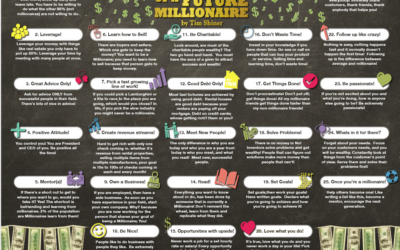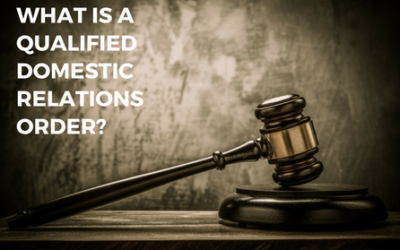FINANCES, HOMEOWNERSHIP
Your House Isn’t an Asset…and You Should Agree With Me

Joseph A. Davis, CDFA®
June 1, 2017
Late September 2016, my 9-year-old son and I had a guy’s night out. We ate dinner & visited the local video game store to purchase a couple games I knew he’d love. I love playing video games too – so it was a win-win. As we ate dinner, I steered the conversation towards financial topics. Now, I get it, finance can put the best of us to sleep, let alone a bright 9 year old whose primary focus is typically on video games or some sort of fantasy novel.
However, I drew the conversation towards finances as I am overwhelmingly concerned that my children truly understand how money works. My goal, among many, is to mold my children’s view of money and help them avoid common mistakes. To simplify the process, I decided to focus on the definition of an asset & a liability. We also discussed rates of return, investment ideas, expenses & income. After discussing these terms, my son in his wisdom said, “So Assets are things that put money in your pocket and Liabilities take money out of your pocket, right Dad?” I couldn’t have said it more clearly myself.

My goal, among many, is to mold my children’s view of money and help them avoid common mistakes.
If we apply this logic to everything we own (or that which owns us) it becomes very simple where to place assets & liabilities on your balance sheet. Unfortunately, most people haven’t given much thought to this topic. While there can be many reasons, the major reason is that most people were never taught how money works. I want you to know that it isn’t your fault. It isn’t your fault because no one ever taught you. There aren’t many free-passes in life so take this one as yours.
Because of the lack of financial education, a lot of Americans buy liabilities they think are assets. The biggest culprit? Your primary residence. Don’t agree? While my bank can put my house down as an asset on their balance sheet, I cannot do the same. This is still true even when my home is paid off. Why? Even if I no longer carry the debt obligation – the home continues to be a maintenance, tax & insurance liability. Unless it’s generating income, it’s a liability. It’s sad that when I ask people to name their biggest asset, the most common response is, “Well, it’s our house I guess.” This is an unfortunate lie that has been fed to most Americans. Need further proof? Let’s look at the definition of an accredited investor.
By definition, an accredited investor is a person or entity that can deal with securities not registered with financial authorities. Basically you’re considered a “big-boy” and can afford to make mistakes. You can satisfy the accreditation requirements through income, net worth, asset size, governance status or professional experience. For most individuals, accreditation can be met through the following:
1. Demonstrate an annual income of $200,000, or $300,000 for joint income, for the last two years with expectation of earning the same or higher income. An individual must have earned income above the thresholds either alone or with a spouse over the last three years. The income test cannot be satisfied by showing one year of an individual’s income and the next two years of joint income with a spouse. The exception to this rule is when a person is married within the period of conducting a test.
2. A person is also considered an accredited investor if he has a net worth exceeding $1 million, either individually or jointly with his spouse, excluding their primary residence.
An example of an accredited investor, as found on Investopedia:
“Consider an individual who earned $150,000 of individual income for the last three years and reported a primary residence value of $1 million with mortgage of $200,000, a car worth $100,000 with outstanding loan of $50,000, 401(k) account with $500,000 and a savings account with $450,000. While this individual fails the income test, he is an accredited investor according to the test on net worth, which cannot include the value of primary residence and is calculated as assets minus liabilities. The person’s net worth is exactly $1 million, which is calculated as his assets of $1,050,000 ($100,000 plus $500,000 plus $450,000) minus a car loan of $50,000.” Read more: Accredited Investor

If you have been taught your entire life that your house is your biggest asset – you have unfortunately been misinformed. The real question that should be asked is, “Why does the government recognize the true value of a primary residence yet most Americans do not?
A further review of the Accredited Investor Net Worth Standard can be found on the the SEC website, https://www.sec.gov/info/smallbus/secg/accredited-investor-net-worth-standard-secg.htm
Here again we see the same notes that the “primary residence is not counted as an asset in the net worth calculation.” So if you have been taught your entire life that your house is your biggest asset – you have unfortunately been misinformed. The real question that should be asked is, “Why does the government recognize the true value of a primary residence yet most Americans do not?
Another interesting question to ask, “How many American households meet the Accredited Investor status?” While there are other qualifications beyond income & net worth, for the sake of this conversation I want to focus specifically on net worth.
A 2015 Spectrum Group report showed that there are approximately 10.1 Million millionaires households in the US – not including their primary residence. With Approximately 115,227 households – only 8.7% of the US is classified as a millionaire. What?!?!
Additionally, a 2013 Wells Fargo study found that 37% of people don’t ever expect to retire. A 2014 Huntington post article stated 22% of Americans would rather die than retire without enough money. Of those that do retire, the Employee Benefit Research Institute calculated that 83% of baby boomers and Gen Xers in the bottom fourth of the income distribution will eventually run short of money. Add into this the additional issues of taxation & inflation & one should ask – Why would you ever try to retire? Or more importantly, why would you try to retire doing the SAME thing everyone else is doing? Which includes, for many Americans, purchasing the biggest most expensive house they can afford. Is it working? I don’t think so.
With the shift from defined benefit to defined contribution plans – most US households are not doing enough to meet their retirement needs. How much do you need to retire? I recently read a report from a highly respected brokerage firm that 10 X your income would be sufficient. For an American household making $100,000 annually, this would mean they need $1,000,000. Creating a 4% distribution plan, in conjunction with social security – this household would be making less income in retirement than their working years. If this household had a pension plan, like many of our clients, they would actually be making more money into retirement. The reality is that most households today do not have defined benefit pension plans. Also, why do I want to make less income in retirement? Don’t I want to make more?
The reasoning is generally always the same. “When I’m retired I won’t have a house payment, childcare, or payroll taxes, so I don’t need to make as much to enjoy the same standard of living.” While this sounds like firm logic, I want you to consider the following:
1. A 3% inflation rate will demand your spending will double within 24 years of retirement. This is simply the Rule of 72. Divide your given interest rate by 72 and you’ll learn how quickly your investments will double. When applied to inflation, we are considering purchase decay instead.
2. Many households could anticipate spending at least $250,000 in out of pocket healthcare expenses.
3. The average married couple has a 90% chance that at least one of them, will live well into their 90s.
4. Last, I don’t know about you but I want to make more into retirement – not less.

Robert Kiyosaki said, “savers are losers.” Don’t take this as an insult – it’s a testament to the low interest rate environment we live in.
So how much do you need? While I believe 10x your income isn’t enough – 25X your income may be. The same household making $100,000 per year would need a $2,500,000 portfolio today. In fact, this number is large enough that the receiving household would be making more income in retirement based on the same arguments listed above. If you’re lucky enough to count on a pension & social security – then we can bring that number down. Here’s a simple formula to follow (fill in the blanks):
CURRENT GROSS (BEFORE TAX) HOUSEHOLD INCOME $________________
Now multiply that number by 25. This will give you your Capital Value Equivalency.
A X 25 = ____________________
Now, let’s determine the CVE of any additional income you may have:
Passive Rental Income =________________
Pension Income =____________________
Passive royalties or other =________________
Social Security = _____________________
Total =$_______________________
Now multiply this total by 25. Subtract the difference from your grand total CVE. This is your retirement number in today’s dollars! If you hit this number you’ll more than likely be making more than 100% of your take home pay! That’s a goal I could get used too.
Regardless where you are at in life, an $850,000 CVE number is challenging. As a soon to be 36-year-old, if this was me, inflation dictates I would still need $1,700,000 by the time I’m 60. If I’m already 60, I sure hope my retirement account is at least $1,000,000 just to be safe. Unfortunately, far too many American households just aren’t there. I think far too many of us have spent our lives trying to keep up with the Jones’s; by the way, the Jones’s are exhausted and up to their eyeballs in debt.
Robert Kiyosaki said, “savers are losers.” Don’t take this as an insult – it’s a testament to the low interest rate environment we live in. Our parents & grandparents enjoyed great rates at the bank, a declining interest rate environment (which increased bond prices) and pensions. And like good children, we listen to our parents & follow their examples. Unfortunately, you and I don’t have that luxury. While investing always includes risk – it isn’t defined by risk. Keeping too much fixed income assets or worse, doing nothing at all, is far riskier to me. CDs, checking & savings accounts at the credit union are a loss-leader for banks & credit unions. Banks encourage us to save partly because they can hypothocate a portion of their deposits as leverage for their lending products.
You look at the current housing boom & so many people are selling their homes to “make money” and upgrade their lifestyle. People feel like they are wealthier but they are not adding to their liquid net worth nor are they building income. All the while the banks & credit unions & home developers are making money hand-over-fist. I think the problem with most of us is that we are taught to buy liabilities that are sold as an asset. Robert Kiyosaki also said, “The poor buy stuff, the middle class buy liabilities they think are assets & the rich invest.”
Rant over, I think real estate can be an amazing investment. Thousands of people have become exceedingly wealthy utilizing real estate. I personally have rental income & love it! Additionally, I love equities & the growth opportunities that can be found there. As a business owner, I am constantly seeking ways to build equity there as well too. I think the perfect investment trifecta is just that, equities, business & real estate.
So how can you turn your primary residence into an income producing asset? Consider “house-hacking”, Airbnb, or when you go to purchase your next home – don’t sell it. Rent it out. Get creative. It’s amazing what happens to your net worth when someone does something like this. Before you do any of these things though – get financially educated. We have TONS of resources available to our clients.
The beautiful thing is, no matter where you are at in your life, you can decide now to make a change. Become educated, read books and find a mentor. Surround yourself with winners & like-minded individuals. Last, go out and do something good for someone, it will come back to you ten-fold!
Follow These Two Rules to Build Wealth in Any Market
Throughout the past two and a half months I have continued to ask myself, did we jump off a financial cliff? The answer was no. How did I know? The answer, while somewhat complex, is profoundly simple.
Financial Planning in the Sandwich Generation
While it’s true that retirement accounts can be used to save for college, there may be negative consequences to doing so. It’s best to talk with a financial professional to determine the appropriate course of action and to make sure you’re on track to meet your goals.
Matchmaker: Maximizing Your Employer 401(k) Contributions
A 401(k) isn’t the only option for retirement, but it’s definitely one of the most attractive. In many cases, it offers free money and is relatively easy to roll over when you change jobs. A financial professional can help you prepare for retirement with a 401(k) that fits your current investment style and stage in life and adapts to changes in career or investment styles.
Splitting Retirement Nest Eggs During Divorce
Qualified plans, such as 401(k), profit sharing, defined benefit pension and money purchase pension plans, have defined benefits or defined contributions. A qualified domestic relations order, or QDRO, is required when dividing qualified plans.

Davis Financial LLC
A financial services firm servicing clients across Utah. We strive to understand your goals, help you manage your retirement planning, guide your overall wealth strategy and help minimize your tax liability through a long-term and trustworthy relationship.
Office Hours: M-F, 9am-5pm
Call Us: (801) 620-0586
Directions: Map It
Copyright © 2023 Davis Financial. All Rights Reserved.
This site is published for residents of the United States and is for informational purposes only and does not constitute an offer to sell or a solicitation of an offer to buy any security or product that may be referenced herein. Persons mentioned on this website may only offer services and transact business and/or respond to inquiries in states or jurisdictions in which they have been properly registered or are exempt from registration. Not all products and services referenced on this site are available in every state, jurisdiction or from every person listed.
Securities offered through Purshe Kaplan Sterling Investments, Member FINRA & SIPC., Headquartered at 80 State Street, Albany, NY 12207. Advisory Services offered through BEAM Wealth Advisors, Inc., a SEC Registered Investment Advisory Firm. BEAM Wealth Advisors, Inc. is a separate entity from Purshe Kaplan Sterling Investments. Joseph Davis, Registered Representative, Aaron Schuler, Jr, Investment Advisor Representative, Beam Wealth Advisors, Inc., Tax services provided by Davis Schuler & Associates, LLC. Advisory services offered by Beam Wealth Advisors. Davis Financial LLC, Beam Wealth Advisors, Inc., Davis Schuler & Associates, LLC, and Purshe Kaplan Sterling Investments are separate, unaffiliated entities.




